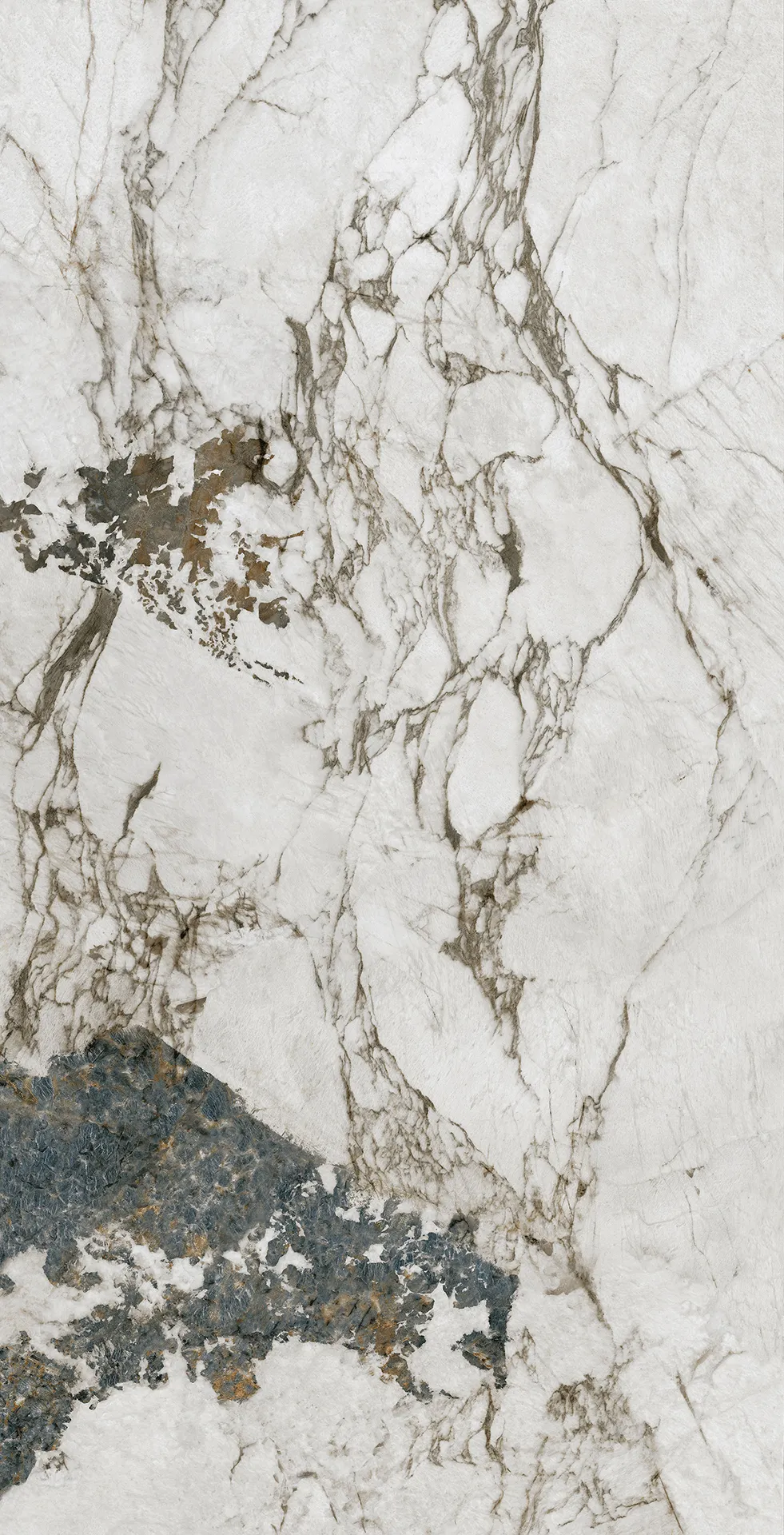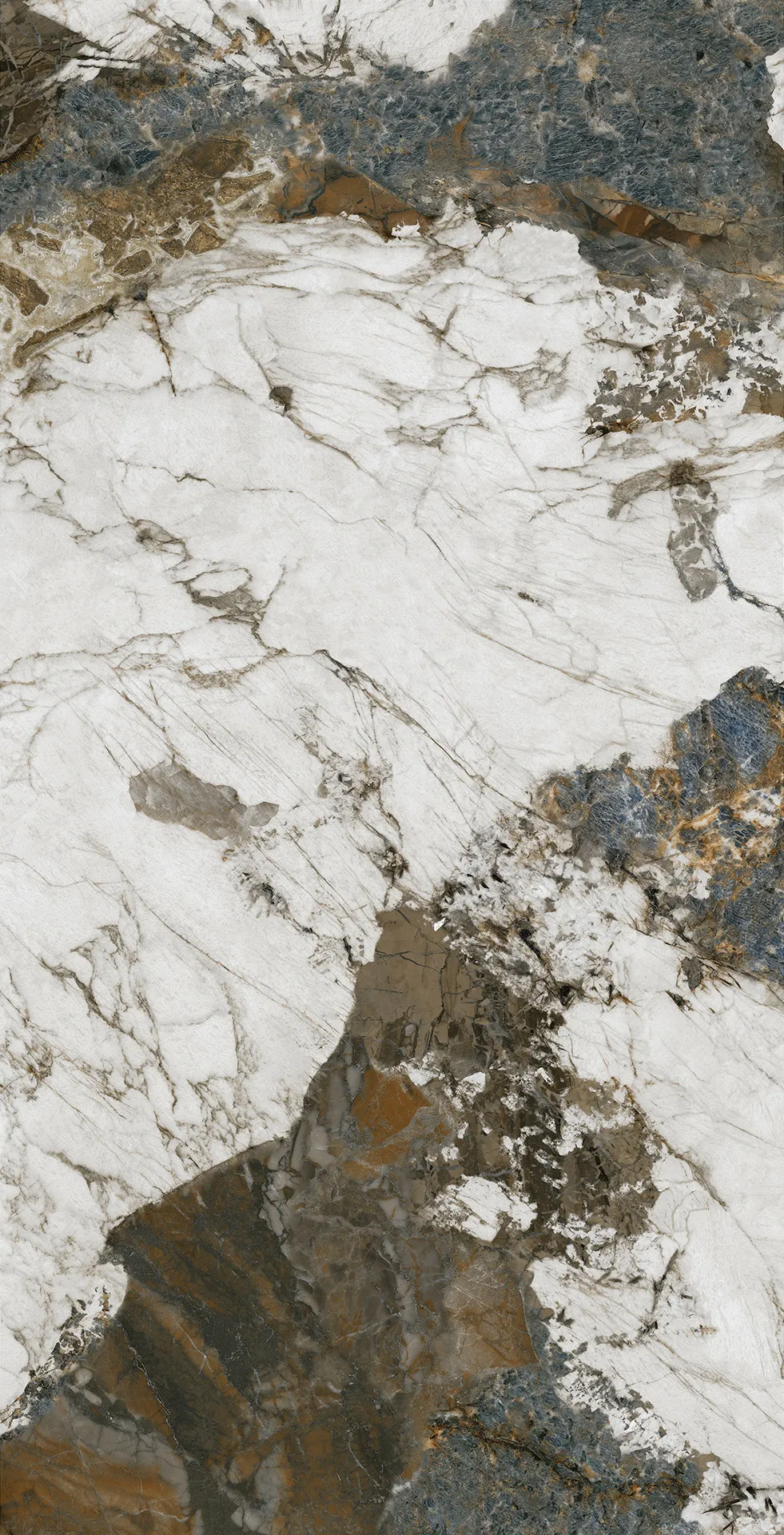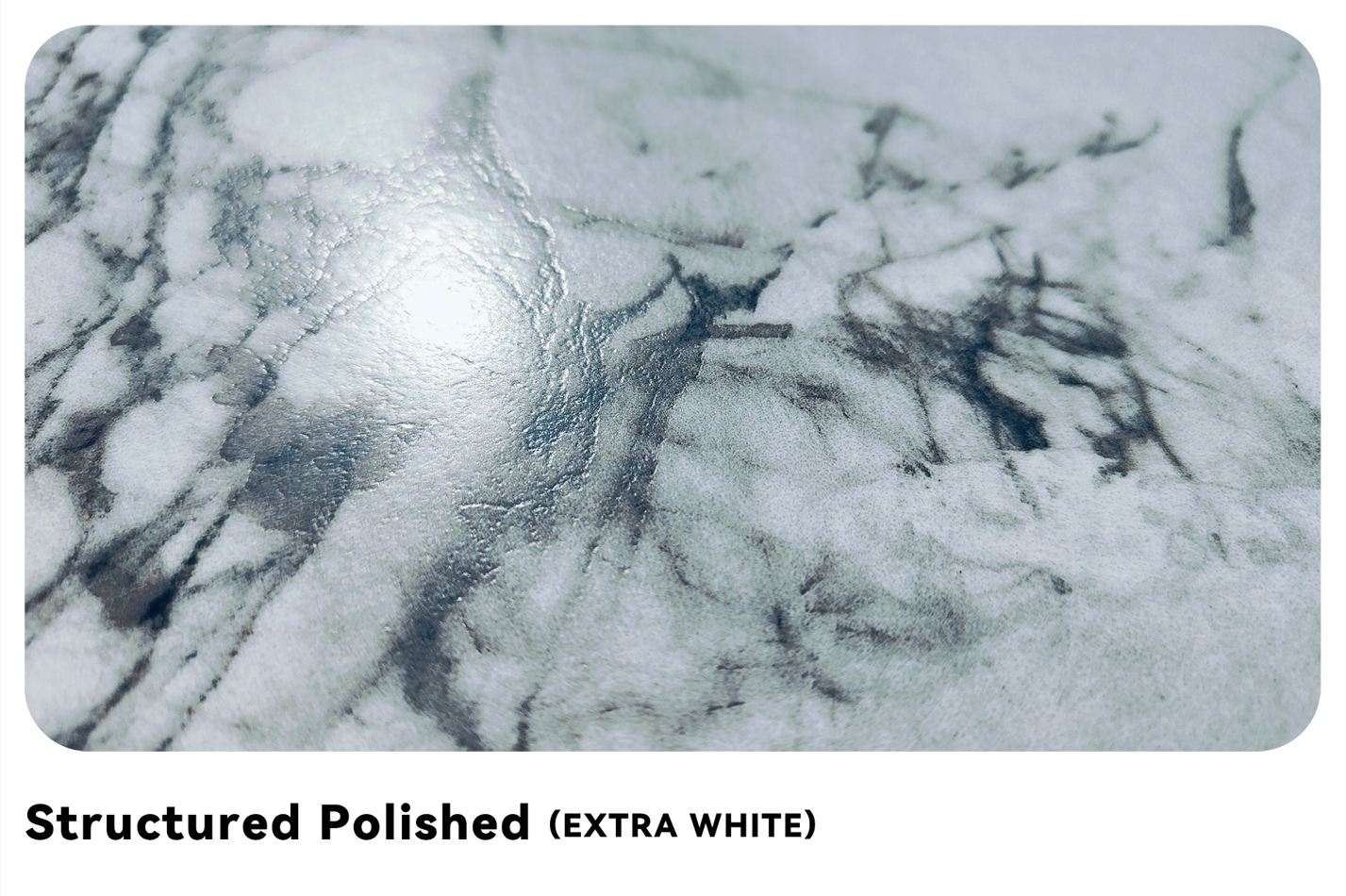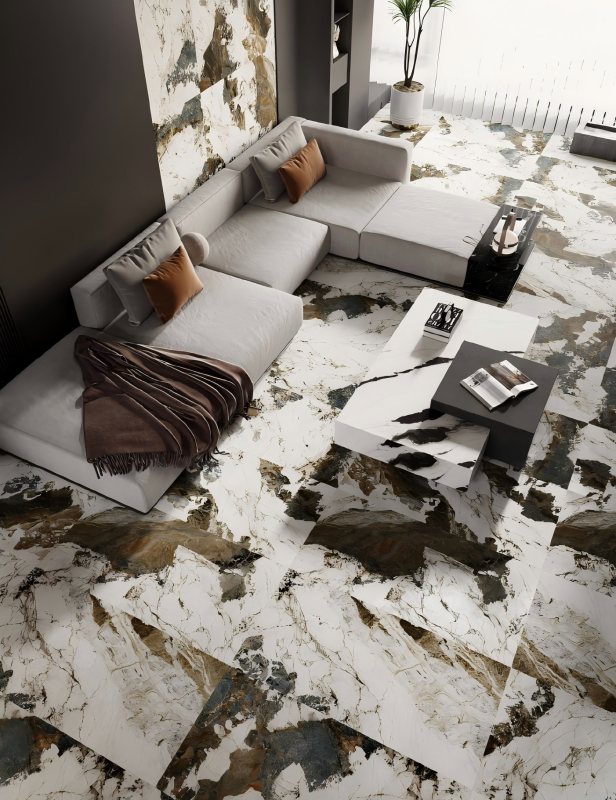With the continuous advancement of home decor and kitchen design, marble stone countertops are gaining popularity among consumers for their natural texture and high-end feel. However, balancing aesthetics with practicality raises an age-old question: are marble stone countertops susceptible to staining?
This report comprehensively analyzes the staining properties of marble stone countertops from multiple perspectives, including materials science, chemistry, physical structure, daily use, and maintenance.

What are the characteristics of marble stone countertops?
Marble is a natural stone formed from calcite (primarily calcium carbonate) under geological conditions of high temperature and high pressure. Unlike artificial stone or man-made composites, marble stone countertops possess the following key properties:
1. Natural Porosity
Made of calcite crystals and small impurities, marble stone countertops possess a naturally occurring microporous structure, one of their most notable characteristics. These pores, typically ranging in size from nanometers to micrometers, are imperceptible to the naked eye but can absorb liquids and oils. Because of this, marble stone worktops are susceptible to staining during use. Even if the surface appears smooth, it's difficult to completely block the intrusion of external liquids.
2. Chemical Sensitivity
Marble stone worktops contain calcium carbonate, which reacts with acidic substances to form soluble salts, disrupting the surface crystal structure. For example, if acidic liquids such as lemon juice, vinegar, and cola remain on marble stone countertops for extended periods, they will not only enlarge the surface pores but also accelerate the penetration of pigments, resulting in permanent stains.
3. Surface Gloss and Texture
Marble stone countertops are typically polished to achieve a smooth and lustrous surface. This polish can mitigate liquid penetration to some extent, but it doesn't completely eliminate the risk of staining. While the gloss can sometimes mask surface pores, from a materials science perspective, these pores still exist and serve as potential pathways for staining.
In summary: Marble stone countertops are naturally porous, chemically sensitive, and have limited polishing capabilities. These three characteristics combine to make them susceptible to staining.

What causes marble stone worktops to stain?
Are marble stone worktops susceptible to staining? This question can be scientifically explained from both physical and chemical perspectives.
1. Porosity Leads to Liquid Absorption
The microporous structure of marble stone worktops makes their surface absorbent to liquids. When liquids such as red wine, soy sauce, or coffee fall onto a marble stone countertop, the liquid molecules penetrate deep into the stone through the micropores. This absorption is a slow but persistent process, and once the stain penetrates deeply, it becomes difficult to remove with simple wiping.
The risk of marble stone countertop staining is further increased in high-humidity environments, as humidity increases the micropores' ability to absorb liquids, making it easier for liquids to penetrate and diffuse into the stone. This also explains why marble stone worktops used in kitchens or dining rooms are more susceptible to staining.
2. Chemical Reaction Causes Discoloration
The calcium carbonate in marble stone worktops reacts with acids to form soluble carbonates or other salts, disrupting the crystal arrangement on the surface. This damage not only reduces the surface gloss but also creates microcracks, through which liquids and pigments can penetrate into the stone, resulting in deeper stains. For example, tannins in red wine, pigments in coffee, and natural pigments in fruit juices, upon contact with marble countertops, chemically react and penetrate into the pores, partially bonding with the calcium carbonate, resulting in difficult-to-remove stains. This chemical staining, unlike common stains, cannot be removed simply by wiping with water or using standard detergents; it requires professional treatment.
3. Wear of the Surface Protective Layer
Marble countertops typically have a protective coating, such as glaze or nanocoating, to slow staining. However, prolonged use or frequent cleaning can cause wear of the protective layer. Once the protective layer is damaged, the marble countertop is exposed to air and liquids, re-exposure to previously blocked pores, and thus increases the risk of staining.
In summary: The core causes of marble countertop staining are its physical porosity, chemical reactivity, and the limitations of the surface protective layer.

Marble Stone Countertops: Staining Classification and Characteristics
From a professional perspective, marble stone worktop stains can be categorized as follows:
1. Liquid Penetrant Stain
This type of stain is most common in everyday life, such as when liquids like red wine, coffee, and juice come into direct contact with the marble stone countertop. Liquid molecules penetrate the stone through micropores, creating dark spots. The longer the liquid remains, the deeper the penetration, and the more noticeable the stain.
2. Grease-Induced Stain
During cooking, oils such as cooking oil, sauces, and butter, if left on the marble stone countertop for extended periods, can penetrate the pores and subtly bond with the marble's internal structure. Grease-inducing stains are often difficult to completely remove and require specialized stone cleaners or polishing.
3. Chemical Stain
Acidic or alkaline substances react chemically with the marble stone countertop, altering the arrangement of the calcium carbonate crystals and making it easier for the pigment to penetrate. Common substances include vinegar, lemon juice, fruit acid seasonings, and some detergents. Chemical staining not only causes color changes but can also damage the stone surface, affecting the countertop's gloss and feel.
4. Staining that Affects Gloss and Color
The color and gloss of marble stone countertops can also change during the staining process. Light-colored marble stone countertops, such as white and beige, are more prone to staining. Darker colors, such as black and gray, may be less noticeable, but staining may still occur.
In summary: While the mechanisms for different types of staining vary, they all demonstrate the high sensitivity of marble stone countertops to external substances, directly answering the question, "Are marble stone countertops susceptible to staining?" The answer is a resounding yes.
What are the effects of staining marble stone countertops?
Staining marble stone countertops not only affects their aesthetics but can also have long-term effects on their performance. These effects are as follows:
1. Aesthetic Impact
Marble stone countertops have a naturally beautiful texture, but staining can disrupt the surface's visual appeal, making the kitchen or dining room appear dingy or cluttered. Especially on light-colored countertops, even subtle stains are easily noticeable, directly impacting the overall appearance of the home.
2. Material Damage
Prolonged exposure to acids or oils on marble countertops can damage the calcium carbonate crystal structure, forming microcracks. These microcracks not only easily accumulate stains but can also expand with long-term use, resulting in a rough surface, diminished gloss, and even flaking.
3. Increased Cleaning Difficulty
Once staining has formed, it is often difficult to remove with standard cleaning methods. While specialized cleaning agents and polishing can partially restore the stain, they are costly, complex, and cannot guarantee a complete restoration of the natural stone's original appearance.
In summary: Staining affects marble countertops not only visually but also affects material stability and ongoing maintenance costs, further highlighting their susceptibility to staining.

Marble Stone Countertop Staining: How to Prevent and Maintain It?
Although marble countertops are susceptible to staining, the risk of staining can be significantly reduced through scientific prevention and routine maintenance. Professional recommendations include:
1. Glazing and Protective Coating
After installing a marble countertop, applying a glazing or polymer protective coating creates a protective film on the stone surface, preventing liquids from penetrating the pores. The quality and thickness of the coating directly determine the effectiveness of the protective coating. It's recommended to inspect the protective coating annually and re-glaze if necessary.
2. Promptly Clean Liquids
During daily use, any colored liquids such as red wine, juice, and coffee should be wiped away immediately. Delaying treatment allows liquids to penetrate the pores and deepen the stain, or even permanently stain the surface.
3. Use Potholders, Placemats, and Cutting Boards
During cooking and dining, avoid direct contact between grease and acidic seasonings on marble stone worktops. Using potholders, placemats, and cutting boards not only prevents staining but also reduces the risk of heat damage, extending the life of the countertop.
4. Regularly Polish the Countertop Professionally
Regularly polishing the marble stone countertop with a professional stone polish can restore its luster, fill pores, and slow down liquid penetration and staining. Polishing also removes shallow stains and oxidation marks, enhancing the countertop's aesthetic appearance.
5. Avoid Using Corrosive Cleaners
Strong acids or alkaline cleaners may react chemically with the marble stone countertop, accelerating staining or corroding the surface. For daily cleaning, choose a neutral stone cleaner or a dedicated stone care solution.
Are marble stone countertops susceptible to staining?
From the perspectives of materials science, chemistry, physical structure, and daily use, it's a scientific fact that marble stone countertops are susceptible to staining:
1. Porosity and microcracks allow liquids to easily penetrate;
2. The chemical properties of calcium carbonate increase the risk of staining;
3. Surface gloss and glaze limits make it difficult to completely block the intrusion of pigments;
4. Light-colored marble stone worktops are more susceptible to staining, while dark-colored marble stone worktops, while less noticeable, still present a potential risk.
While the risk of staining cannot be completely eliminated, comprehensive measures such as glazing, timely cleaning, thermal insulation, regular polishing, and the use of neutral detergents can significantly reduce the likelihood of staining and extend the beauty and lifespan of your marble stone worktop.
What types of marble slabs does WOWSLAB supply?
WOWSLAB specializes in high-quality Calacatta marble slabs and other premium sintered stone slabs. Our Chinese factory produces slabs suitable for residential, commercial, and large-scale projects. Buyers can purchase wholesale, customized, or single slabs, with access to discounts, promotions, and competitive prices. Our company provides full support, including design consultation, installation guidance, and after-sales services.


